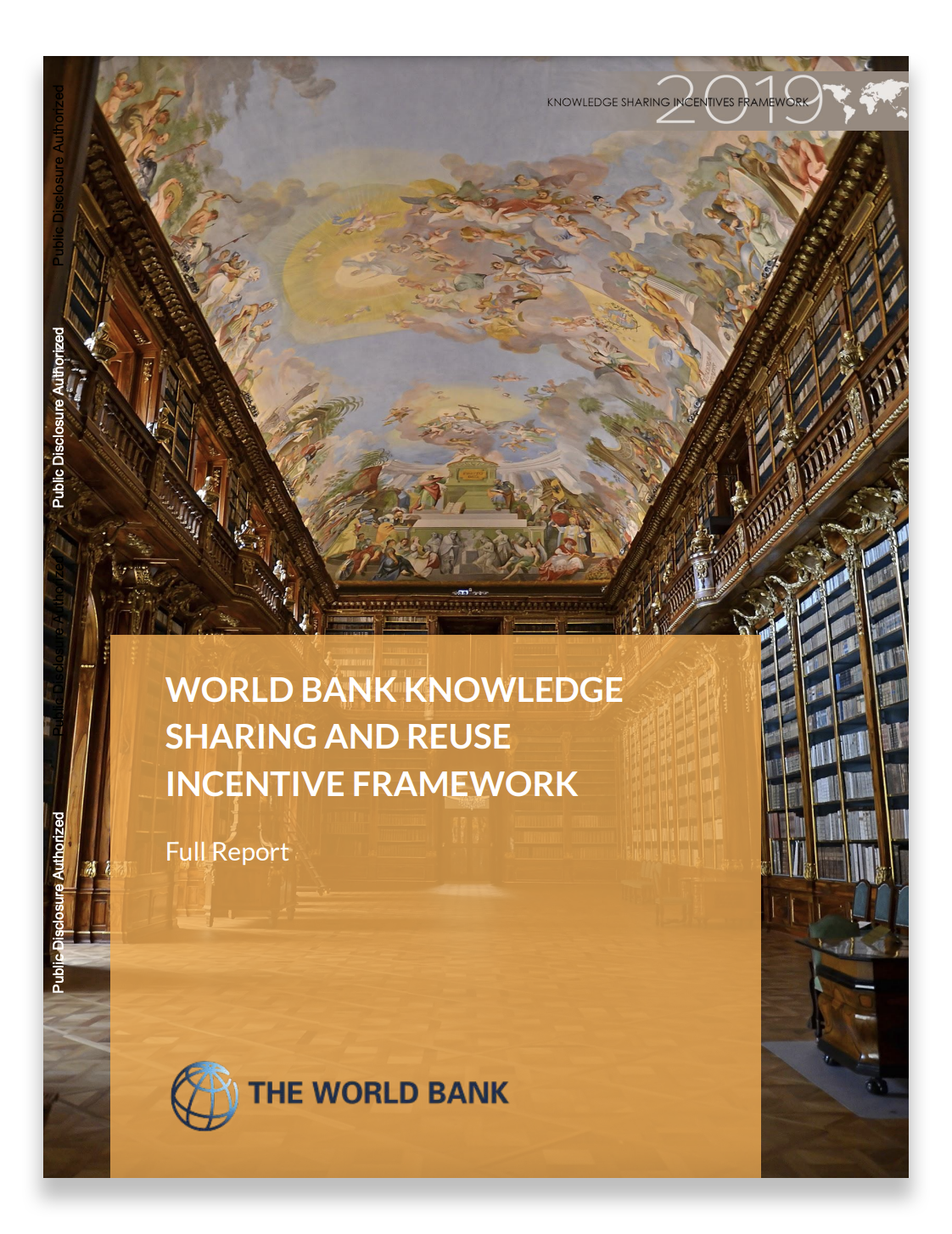Sharing the Tools to End Global Poverty
0 min read
One of the biggest challenges faced by any organization is effective knowledge management (KM). Almost all of us know what it’s like to work in a place with bad knowledge management practices: you find yourself answering the same questions a hundred times; passwords get lost and nobody knows where to find them; your more senior coworkers swear a document or deck exists somewhere, so keep looking for it, it’ll probably turn up!
But bad knowledge management is more than just an annoyance (even though it definitely is annoying). It holds us back from growth, as organizations and as individuals. The flow of information between people and teams is what allows companies to get better at what they do — to learn from their past experience, update their methods, and amplify their impact.
For international development organizations like the World Bank, knowledge sharing takes on even weightier consequences. In this line of work, what seems like an administrative nuisance to some could actually be the difference between a mother in South India being able to send her children to school, or keeping them back to help the family make ends meet. The health and prospects of millions of people hinge on the Bank and institutions like it being able to work as efficiently as possible. Robust knowledge management is key to fulfilling the Bank’s mission of ending extreme poverty and bringing shared prosperity to the world’s poorest 40%.
We partnered with the World Bank to develop a new, customized knowledge management framework, to be used in their offices globally. We built a customized toolkit to help foster a culture of sharing — one that would allow invaluable information to flow more freely between 10,000 World Bank employees, working in 120 offices worldwide. By facilitating knowledge transfer, our work is supporting the Bank in bringing a better quality of life to millions of people.
What makes knowledge management so difficult
Organizations are living organisms, complex systems with many moving parts. There are a lot of different obstacles that can derail effective knowledge management, including both structural barriers (like a lack of formal training on how information should be archived and shared) and behavioral barriers (like a lack of social norms that encourage people to share information). Our challenge was to build a framework that accounted for both.
We went through a 13-phase process to develop the final framework & pilots, including a massive behavioral diagnostic. This included sitting down with 50 World Bank staffers for in-depth interviews, surveying hundreds more employees, interviewing stakeholders from 22 external organizations on best practices, and conducting an extensive literature review. We mapped out and visualized the process that employees had to go through to share information, identifying key knowledge transfer points (KTPs) before zooming in on the ones where we thought we’d have the greatest potential impact.
Based on our diagnostic, we built a tailor-made incentive framework, identifying 225 evidence-based incentives for knowledge sharing. Finally, we translated this framework into 20 pilot interventions, laying out concrete steps that readers could take to ensure smoother knowledge transfer.
The behavioral biases that impede knowledge management
Knowledge management can often feel like a tedious process, and employees see it as a formality — something they need to get through just so that they can check a box. It’s no surprise that knowledge sharing protocols often fall by the wayside: few of us are deeply passionate about workflow documentation and records management.
But as we’ve established, knowledge management isn’t just bureaucratic red tape: it’s mission critical. It’s about building an ecosystem of crucial resources to help the Bank (and any other organization) amplify its impact. This disconnect can be chocked up in part to biases like salience bias and hyperbolic discounting, which distract us from the big-picture implications of knowledge sharing and keep us focused on its more tangible inconveniences.
The challenge is to help people see the link between knowledge sharing and their higher-level values. Specifically, our research found that at the end of the day, there are 3 major drivers of knowledge sharing: making it more social, making it easier, and linking it to self-development. For example, leaders can encourage uptake of information by explicitly articulating how it can help team members develop competencies they care about, or by publicly recognizing employees who have leveraged knowledge management systems for the benefit of their projects or colleagues (linking to self-development, making it social).
The World Bank Headquarters in Washington, D.C.
Knowledge sharing to end poverty
At the end of the day, the tool we produced needed to be practical and actionable for World Bank employees all over the world. We developed our final report with this in mind, presenting the framework alongside realistic scenarios illustrating how to use it in day-to-day work life. A comprehensive toolkit for knowledge sharing, our framework and the interventions based on it provide thousands of World Bank employees with concrete ways to do their jobs more efficiently and effectively, a crucial step towards digging the world’s most vulnerable people out of poverty.



















